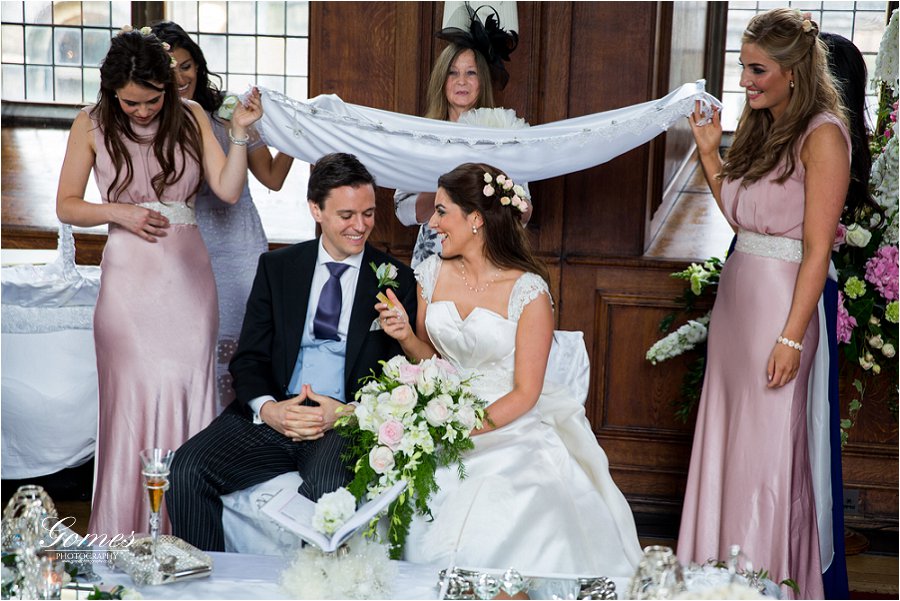Persian Wedding Traditions
Ancient ruins and magnificent mosques are just a few things making up Iran’s landscape. Delve into some of the country’s traditions and discover how you can incorporate some of them into your modern-day wedding.
Ceremony
The bride sits before a mirror so that a groom’s first view of her is a reflection. A sofreh-ye aqd (wedding cloth) is spread before the mirror and laid with many symbolic foods and items, including seven herbs to drive away evil spirits, pastries, flatbread with sayings written in saffron ink, eggs and cheese (fertility symbols), rose water (to perfume the air), and the Koran. After the marriage contract is signed, two happily married women hold a white sheer square silk over the couple while a third scrapes a kallehquand (sugarloaf), causing sweetness to “rain down” on them. Another woman sews a piece of cloth with seven threads to “sew up the mother-in-law’s tongue” while the imam reads the contract and prays aloud. He asks the bride three times if she agrees to marry, then declares them husband and wife.
Food, Drink & Toasts
At the arusi (feast), a whole roast lamb and sweet rice are served, followed by singing and dancing. The couple moistens their fingers with honey and places them in each other’s mouths, or feeds each other sugarcoated almonds.
Starting Your Lives Together
After the reception, the bride leads the wedding procession to the groom’s house in a car decorated with bells, carrying cheese, bread, and salt for good luck. The bride and groom rush to their new home, kick over a bowl of water in the doorway for good luck and engage in a mock struggle to enter first since the winner is said to rule the household.
Tips and Ideas for Incorporating Traditions Into Your Modern-Day Wedding
* Why not ditch the oft-loathed Western tradition of smashing cake into your new spouse’s face in favor of Iran’s sweeter tradition: licking your beloved’s honey-coated finger!

